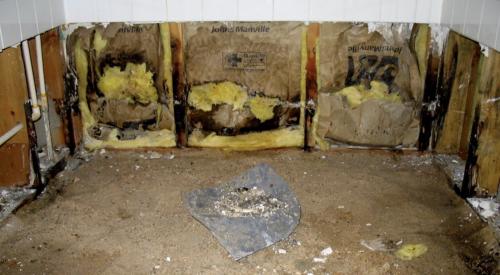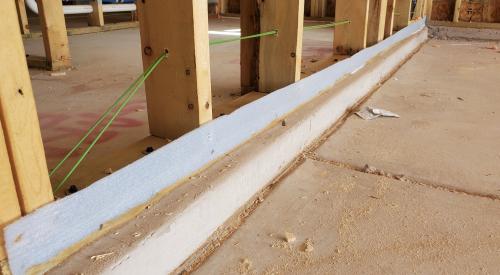|
Calling himself a forensic engineer, Joe Lstiburek has done more work than he’d like finding problems and fixing failed buildings. Ideally, he and architect Betsy Pettit say, houses would get built correctly from the beginning. “Right now, I’m a building pathologist,” Lstiburek says. “I want to be an obstetrician. I’m tired of doing autopsies. I want to deliver healthy, bouncing baby homes.”
“Build homes the right way from the beginning” is the basic tenet of Lstiburek and Pettit’s firm, Building Science Corp., one of the most sought-after building technology consultancies in North America. Through BSC studies, by consulting major home builders such as Pulte Homes, Ryland, D.R. Horton and Del Webb and smaller home building firms, and as a partner on one of the five Building America teams, BSC has amassed a wealth of information on the specifics of building science and is internationally recognized for its expertise in moisture dynamics, indoor air quality and building failure investigations.
One fundamental of Lstiburek and Pettit’s work, and that of other Building America teams, is understanding the home as a system rather than as the sum of its parts. “Every assembly is related to another assembly in your house,” Pettit says. “If you change one, it affects another. Much like in our bodies, where everything operates in concert, the same is true with houses.”
It’s a simple idea, but not one that has caught on quickly. For example, tightened building envelopes have been a goal of builders for years as they try to minimize air leakage to maximize energy efficiency. As a result of that tightening, however, HVAC needs might change so that systems can be downsized. Also, a tighter building means that much of the moisture and toxins from inside the home (from formaldehyde in cabinets and volatile organic compounds in carpets, for example) remain inside without proper ventilation.
Pettit says the breakdown often comes when HVAC contractors, who are often the first called by angry homeowners when heating or cooling isn’t right, simply don’t have sufficient evidence to trust that builders and architects will design tight homes.
“Back in the days when building wasn’t quite as complicated, we had a master builder who was responsible for understanding all the parts,” says Pettit. “Now we will often draw up floor plans and elevations but wait until they are ready to be built in the field before we have a design for the ductwork layout, the heating and cooling systems, and the electrical and plumbing. BSC does those layouts here on the drawings. It’s more cost-effective to do it on paper than fix it in the field.”
| “I was taught old-fashioned, fundamental principles of engineering and physics, and all I do is apply them.” |
Many of BSC’s findings are available for all to use. Lstiburek’s books on moisture and his four Builder’s Guides are considered must-haves by many builders. Updated yearly to include builder feedback and new research, each Builder’s Guide covers a specific climate — cold, hot-humid, hot-dry/mixed-dry or mixed-humid — and uses a systems approach to designing and building homes that are energy-efficient, durable and environmentally responsible, with proper ventilation and moisture control.
Pettit says the books contain almost any information a builder needs, including information on house layout and design, foundations, framing, HVAC, insulation and windows. Still, she says, builders asked for a prototype home for each region to help them move from descriptions and illustrations to real applications. BSC developed Houses That Work, a case-study section of its Web site, www.buildingscience.com, that features climate-specific recommendations, diagrams and photographs for building a particular systems-built home.
Pettit and Lstiburek came to building science in roundabout ways. An architect by trade, Pettit got involved in building science when she was hired by the commonwealth of Massachusetts to oversee building improvements to public housing units and help design guidelines for healthy homes. She points to the design process as an area in which building science can come into play. “There is a big drive now to teach architects building science because it’s not possible to design buildings without understanding the physics of heat flow, air flow and moisture flow,” she says.
Trained as an aerodynamicist, with degrees in mechanical and civil engineering, Lstiburek worked as a laborer building houses after college. After a few days on the job, Lstiburek saw a gap between the solid engineering he had been taught and some of the construction methods of the tradition-based home building industry. After a brief stint as a contractor, he decided he wanted to close that gap.
Although BSC is not the only building science group around, relatively few people in the industry study building science, and most builders don’t get interested until problems arise. Lstiburek says he looked at moisture infiltration problems with synthetic stucco 15 years ago, but no one cared until the litigation started in 1995. He has even done “backyard” projects that are now respected studies. In one, he and some buddies built a hut with 21 siding configurations to gauge water penetration. Lstiburek found that a manufacturer’s stucco wrap had been tested for use with synthetic stucco but apparently had never been tested with its intended cladding — authentic stucco — and failed miserably.
“I’m not afraid to say, ‘Wait a minute,’” Lstiburek says. “I was taught old-fashioned, fundamental principles of engineering and physics, and all I do is apply them.”









